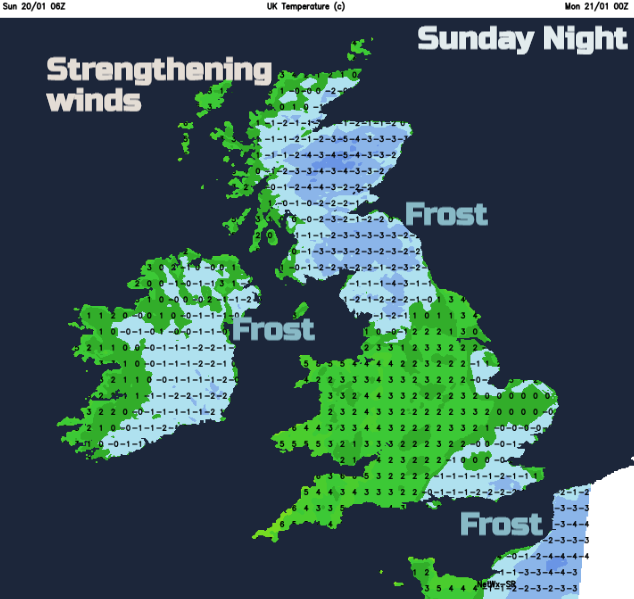
TONIGHT - Lots going on in the night sky this weekend into the start of the new week. A look at the UK weather for Sunday night with a Super Moon, total Lunar eclipse with Venus and Jupiter in conjunction.
The next full moon, known to some as a Wolf Moon, will be a super moon. This will be tonight 20th Jan 2019, Sunday night into Monday.
A Super Moon is when the moon is on it's closest part of its orbit around Earth, it's perigee. It appears larger and brighter and there are often great photos as it rises up from the horizon. That is it. It doesn't have superpowers, just creates a lot of chat and "oooh isn't the moon big/bright" comments if skies are clear.
UK cloud at midday Dundee Satellite Receiving Station.

However, there will also be a total lunar eclipse on Sunday night. You'll have to stay up very late here in the UK to appreciate the colour and shadows but quite a combination.
There will be three full supermoons in coming months. January 21st, February 19th and March 21st 2019 with the February full moon being the closest and largest full supermoon of the year. You can see the moon in the sky already during the afternoon and on Sunday the moon will rise around 15:30, so there isn't the dramatic rising from the horizon after dark sequence which generates the best Supermoon photos.
"Those in the UK will be able to see every part of the eclipse as long as they are willing to stay up all night! The Moon will start to enter the Earth’s shadow just after 2:30am GMT and the maximum eclipse will occur just before 5:15am. The entire eclipse lasts for more than five hours, ending at 7:48am.
The optimal viewing time to see the eclipse is between 4:41am – 5:43am. This is the period of totality, where the moon lies entirely in the Earth’s umbra (full shadow) and will appear red. " Royal Museums Greenwich
During a total lunar eclipse, the Moon can turn an orangey red. The sunlight that is illuminating the moon has passed through the Earth's atmosphere and is being bent back (refracted) towards the Moon. The sun, earth and moon are all in a line, with the moon furthest away from the sun. The earth, being in the way, is blocking the light.

The weather
There is a chance of clear skies but it will be cold, as you would expect in January. A cold front will be moving towards SE Britain so there will be cloud along that. You can already see bands of cloud NE/SW over the UK on the DSRS image above. Another weather system will be heading into the far NW with more cloud and rain to start Monday as the winds pick up. But, in between these two will be more settled, calm and clearer conditions. So there is hope for Sunday night.
Other heavenly bodies
Jupiter and Venus are clear to see around dawn, looking E/SE. Venus is bright and higher up with Jupiter smaller and lower. They will be in conjunction on Tuesday 22nd Jan. They appear to meet or pass, lining up to our view from earth. In reality, they are hundreds of millions of kms apart.
It's worth trying out the app SkyView (Lite), see above. You hold it up to the sky, day or night and it will show where the stars and planets are. The faint white circle in the middle of the screen homes in on a target and a label appears in the bottom left hand corner. It's great. Hold it up to the moon too.